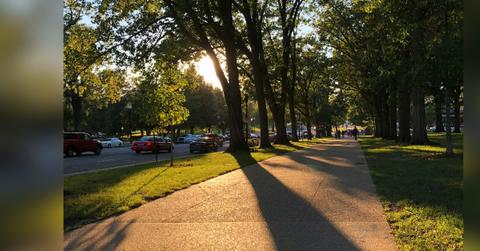 NEWS
NEWSTop 5 Signs Your Sidewalk Needs Immediate Repair

July 28 2025, Published 1:22 a.m. ET
Sidewalks are often taken for granted until they start to show signs of trouble. Whether lining a residential street or framing a commercial property, sidewalks perform vital functions: they provide safe pedestrian access, define a property’s curb appeal, and signal upkeep to visitors and municipal authorities alike. But when cracks deepen or surfaces tilt, those subtle imperfections can quickly spiral into safety hazards, legal risks, and expensive structural issues. Recognizing the early warning signs and knowing when they cross into urgent territory is key to protecting both property value and public wellbeing.
A sidewalk in need of sidewalk repair NYC doesn’t always shout for attention. Sometimes, it whispers through uneven footing or hairline cracks that seem harmless at first glance. But when these symptoms escalate, immediate action becomes non-negotiable. Here are the top five signs that a sidewalk demands repair—right now.
Deep Cracks and Expanding Fissures
Cracks in concrete are common and usually harmless when they’re shallow or isolated. But as temperatures fluctuate, moisture seeps in, and structural stress builds, those cracks can deepen and widen. When they exceed a quarter-inch in depth or lengthen into a network of fissures, they become a serious concern. Such cracks invite water intrusion, which can erode the base layer beneath the slab and cause spalling—a process where pieces of concrete chip and flake off the surface.
Ignored, these deep cracks compromise the integrity of the entire sidewalk section. They also present tripping hazards that increase the risk of injury for pedestrians. If you notice rapid expansion or jagged edges forming along the surface, it’s time to call in a professional for an assessment. Filling minor cracks is a proactive approach, but deep and widening fractures usually signal the need for partial or full replacement.
Uneven or Raised Slabs
Walk down a sidewalk and you might occasionally notice one slab jutting above the others like an ill-fitting puzzle piece. This misalignment—called heaving—is often caused by tree roots growing underneath the sidewalk or soil shifting over time. Raised sections aren’t just unsightly—they’re dangerous. They can cause falls, hinder wheelchair access, and violate city codes for public pathways.
In many municipalities, sidewalk slabs cannot exceed a certain height variation—often as little as half an inch. Anything greater becomes a compliance issue and may lead to city citations or forced repairs. If your sidewalk contains uneven transitions between slabs, especially near driveways, walkways, or heavily trafficked areas, remediation should be swift. Options include grinding down the edge to create a smoother slope, lifting the lower slab, or replacing the problem section entirely.
Pooling Water After Rain
A well-constructed sidewalk should channel water efficiently away from pedestrian routes. If your sidewalk routinely gathers puddles after rain—especially in areas where drainage is supposed to be functional—it’s a sign the grade or slope is failing. These depressions can indicate subsurface erosion or compromised support underneath the slab. Over time, pooled water accelerates deterioration, leading to discoloration, mold growth, and further structural weakening.
Standing water is more than just inconvenient. It becomes a slipping hazard, attracts pests, and signals to inspectors that the pavement isn’t performing as intended. Fixing these depressions may require re-leveling or replacing sections of the sidewalk and improving the grading to restore proper runoff patterns. Left untreated, the problem will only worsen with each storm season.
Want OK! each day? Sign up here!
Surface Deterioration and Spalling
Sidewalks endure relentless exposure to the elements—from blazing sun and freezing nights to foot traffic and de-icing chemicals. These conditions wear down concrete’s top layer over time. Spalling refers to the process where pieces of concrete flake off, exposing the coarse aggregate beneath. It gives the surface a pitted, rough appearance and weakens its ability to resist further damage.
Surface deterioration doesn’t just affect curb appeal—it compromises traction and increases the likelihood of slipping, especially for elderly pedestrians. When multiple areas of spalling appear or the finish layer erodes unevenly, full resurfacing may be necessary. In extreme cases, complete replacement is recommended to preserve long-term safety and durability.
Legal Notifications or City Violations
In some cities, the clearest sign that a sidewalk needs immediate repair comes in the form of a citation. Municipal inspections or resident complaints may prompt the local authority to send notices demanding repair within a set timeframe. These letters usually cite violations of building codes or accessibility standards and outline consequences if the repairs aren’t completed.
Ignoring these orders can result in fines, legal liability for accidents, or the city stepping in to perform the repair and bill the owner afterward. Even if the sidewalk appears modestly damaged, a formal violation notice shifts urgency from optional maintenance to mandated compliance. At this stage, hiring a qualified contractor and securing permits becomes a top priority—not only to meet the deadline but to protect yourself from legal exposure.
Final Thoughts: Addressing Issues Before They Escalate
Sidewalk deterioration is rarely a sudden event—it’s a slow buildup of minor issues that gradually erode safety and structure. But when certain signs cross the threshold—like deep cracks, pooling water, or uneven slabs—they indicate that the problem isn’t cosmetic anymore. It’s urgent. Acting quickly in these moments is a property owner’s best defense against costly repairs, liability claims, and reputational harm.
Proper sidewalk care reflects more than maintenance—it signals attentiveness, responsibility, and pride in ownership. Whether you're managing a multi-unit property or caring for a single home, understanding when your sidewalk’s condition demands immediate action is the first step toward smart, strategic stewardship of your real estate. For reliable help navigating city citations and ensuring fast, compliant repairs, trust the experts at Nycsidewalkviolations.com —where sidewalk safety meets legal precision.


